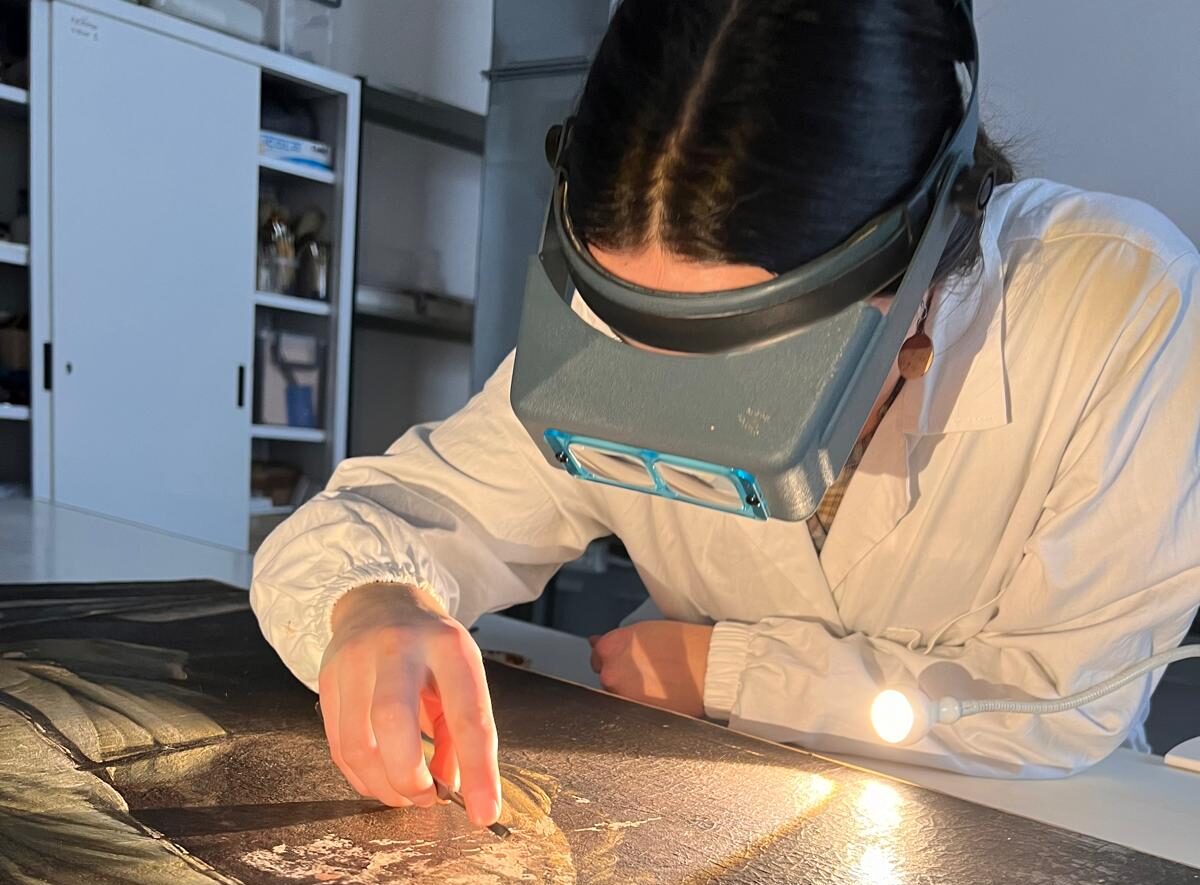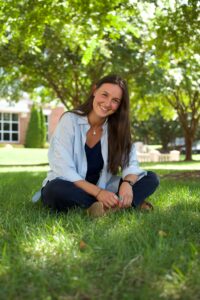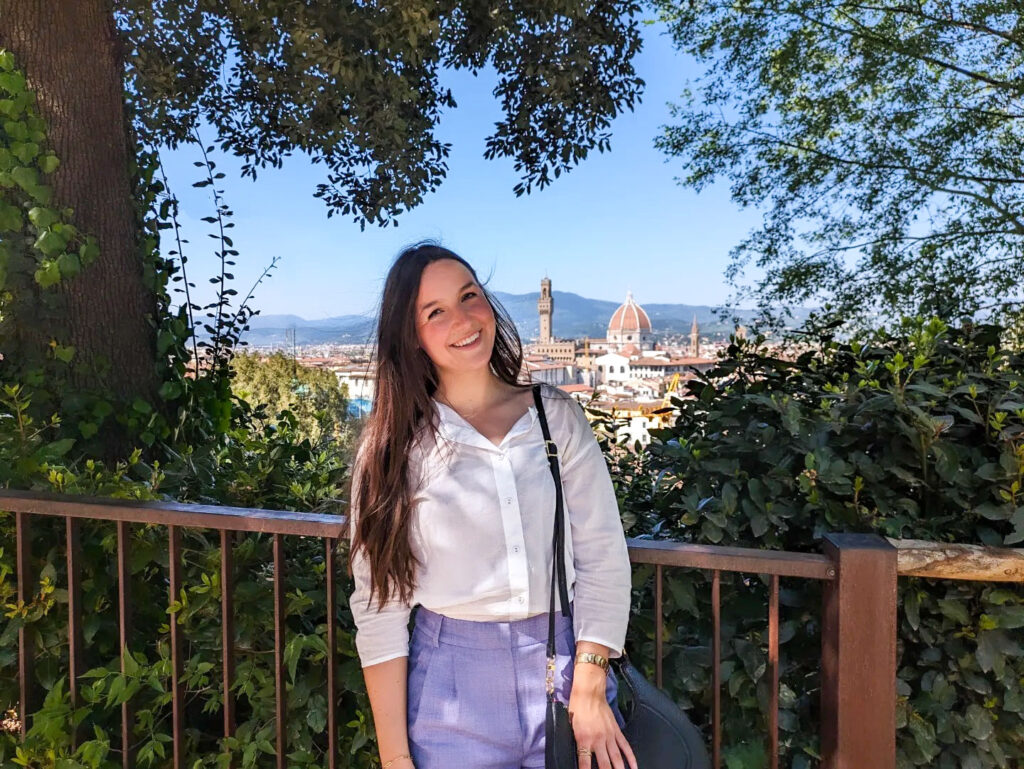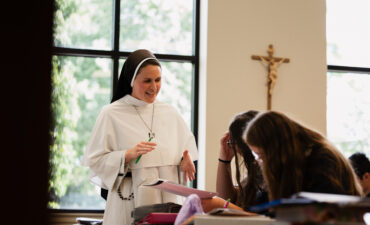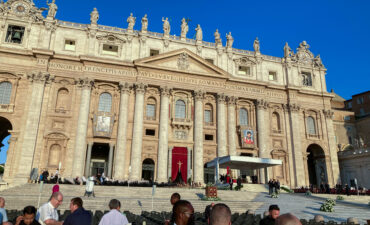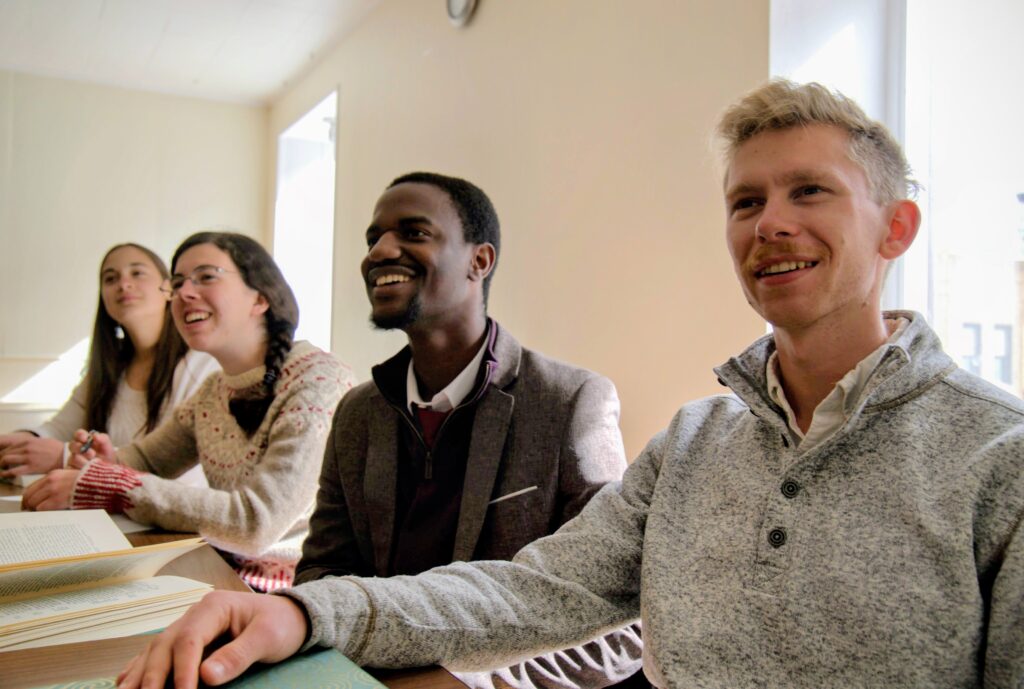“The dynamic process of integrating art and science:” Art Restoration and Culture With Sofia Piliero (‘23)
After graduating from Wyoming Catholic College in the Class of ‘23, Sofia Piliero had the opportunity to travel to Italy. There she studied art restoration and conservation through the Istituto Lorenzo de’ Medici, where she received a Professional Certificate in Art Restoration and Conservation. This two-year degree in the international practice of fine art conservation included technical, ethical, and historic considerations that impact every restoration intervention. Once her studies were completed, Sofia returned to the US, and is currently based in Colorado working for a private restoration studio. “Now, my work ranges from fine art to folk art, family heirlooms and antiques. The pieces that I find particularly compelling are ones that hold personal stories and family history. Every day’s work consists of preserving the past for the future and restoring the world, one piece at a time.”
“When I was senior in high school, I planned to study art conservation for my undergraduate degree at another university but my experience at WCC’s Founders’ Scholarship Competition changed my mind,” Sofia shared. Attending seminars and conversing with students and faculty, she realized that if she wanted to pursue art restoration, WCC would give her the foundation to make that career meaningful. “A background in the liberal arts has provided me with invaluable context to understand the pieces I have worked on in their historical moment.”
Sofia first learned that art restoration was a career when she was about fourteen years old and it became her dream. It’s a field that intersects art, archaeology, art history, and chemistry. Working as an art conservator demands both innovative creativity and precise analysis. “I enjoy the dynamic process of integrating art and science,” she says.
At Wyoming Catholic College, Sofia became immersed in the whole context for western art. She comments: “I am forever indebted to the arts curriculum at WCC. Studying under professors like Dr. Jeremy Holmes provided an enriching encounter with the arts. Although limited, it was a wonderful introduction to art history that went far deeper than mere familiarity with dates, artists, and pieces but actually explored the cultural atmosphere in which these works were created.” Sofia comes from a family of artists and visual art, including sacred art, has always had a place in her surroundings.
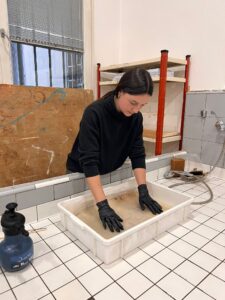 In Florence, Sofia’s course of studies covered a variety of mediums with an emphasis on canvas paintings, frescoes, polychrome wooden statues, and archeological ceramics, as well as an introductory course in paper conservation. “These classes focused on hands-on work which was paired with courses in chemistry, art history, and the ethical guidelines of art conservation,” she recounted. “This field is a fascinating intersection of art and science, because restoration depends on a molecular understanding of the original artwork.” Encountering a centuries-old piece of art, the conservator is emphatically faced with the human experience of holding the past and shaping the future. Time can’t be unraveled, and “although the temptation to peel back layers of the patina to reveal the work at its moment of artistic conception certainly exists,” ethical conservation respects the evidence of the lifetime of a work of art and focuses on minimal intervention with an emphasis on preservation.
In Florence, Sofia’s course of studies covered a variety of mediums with an emphasis on canvas paintings, frescoes, polychrome wooden statues, and archeological ceramics, as well as an introductory course in paper conservation. “These classes focused on hands-on work which was paired with courses in chemistry, art history, and the ethical guidelines of art conservation,” she recounted. “This field is a fascinating intersection of art and science, because restoration depends on a molecular understanding of the original artwork.” Encountering a centuries-old piece of art, the conservator is emphatically faced with the human experience of holding the past and shaping the future. Time can’t be unraveled, and “although the temptation to peel back layers of the patina to reveal the work at its moment of artistic conception certainly exists,” ethical conservation respects the evidence of the lifetime of a work of art and focuses on minimal intervention with an emphasis on preservation.
“When I was considering where to study art conservation, it quickly became clear that a program in Italy would provide opportunities for experiential education on real artwork that were not available in the States.” There were many unknowns as Sofia attempted to communicate with the Italian university and sort through the visa application but once she arrived in Florence, everything fell into place. “The two years I spent there were a worthy investment in the rich field of art conservation as well as in the personal transformation that time spent in another country provides.”
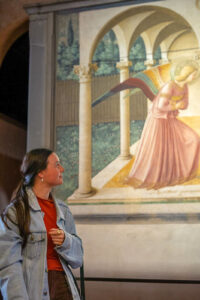 Learning Italian and immersing herself in the tempo of a Florentine day continually brought her into contact with the art, literature, and architecture that had colored so much of her undergraduate education. Street signs with quotes from Dante’s Commedia were an “everyday sight,” a wall with Michelangelo’s youthful graffitti was on her commute to school, and of course, Brunellschi’s magnificent duomo was the first landmark on which she relied as she learned her way around the city. “One of my favorite things about life in Florence was how personal the city felt,” Sofia comments. “Historic characters, personalities, relationships, politics, and family dynamics shape the architecture of the city far more than any considerations of city planning. I was mesmerized by the story of Florence and collecting stories about towers and alleyways and logge made the city come alive for me in its layers of historical significance.”
Learning Italian and immersing herself in the tempo of a Florentine day continually brought her into contact with the art, literature, and architecture that had colored so much of her undergraduate education. Street signs with quotes from Dante’s Commedia were an “everyday sight,” a wall with Michelangelo’s youthful graffitti was on her commute to school, and of course, Brunellschi’s magnificent duomo was the first landmark on which she relied as she learned her way around the city. “One of my favorite things about life in Florence was how personal the city felt,” Sofia comments. “Historic characters, personalities, relationships, politics, and family dynamics shape the architecture of the city far more than any considerations of city planning. I was mesmerized by the story of Florence and collecting stories about towers and alleyways and logge made the city come alive for me in its layers of historical significance.”
“Living in Florence gave me the great privilege of seeing these famous pieces more than once. It was a great gift to visit the Uffizi again and again. I stood in front of Michelangelo’s David with the many lovely friends and family who came to visit me. My favorite Florentine destination was the quiet halls of San Marco which hold the work of Beato Angelico, the great Dominican painter whose frescoes still breathe life and color into the simple stone cells of the monastery.” In northern Italy, the city of Ravenna was a wonderful destination to encounter Byzantine mosaics and see the invention of flying buttresses supporting the cathedral of San Vitale. In the south, the Archaeological Museum of Naples and the ruins of Pompeii illustrate the extraordinary continuity of human activity from 79 AD until now.
 While studying in Italy, Sofia’s class performed restoration work for the Italian State. Led by internationally renowned conservators, they worked in small teams of 5-8 people to restore 15th-18th century canvas paintings, Etruscan archaeological ceramics, and frescoes, both detached and “in situ” in Florentine palaces. “It was an opportunity to develop proficiency in a wide range of techniques as well as a chance to see the differences between working in a private studio or a state-funded museum setting.”
While studying in Italy, Sofia’s class performed restoration work for the Italian State. Led by internationally renowned conservators, they worked in small teams of 5-8 people to restore 15th-18th century canvas paintings, Etruscan archaeological ceramics, and frescoes, both detached and “in situ” in Florentine palaces. “It was an opportunity to develop proficiency in a wide range of techniques as well as a chance to see the differences between working in a private studio or a state-funded museum setting.”
After graduating, Sofia returned to the States to work in a private art restoration studio based in the Rocky Mountains in Colorado. “Our work encompasses a wide range of mediums and objects. I love the daily variety and personal encounters that our small studio size promotes.” And Sofia hopes to continue to hone her skills as a conservator and, one day, would like to open her own art restoration studio. She also sees the place of sacred art in her work as essential: “The profundity of faith has inspired magnificent works of art and in turn, beautiful art can certainly move the spirit of the beholder. One powerful characteristic of visual art is that it invites the beholder to pause in contemplation creating a receptive moment that interrupts the current of everyday life. This interruption can become a space for divine encounter.”
Asked about others who might want to pursue a similar career, Sofia says that “to be an artist in any capacity or to work alongside art requires a sensitivity to the humanities that a liberal arts education will develop. The spiritual and intellectual formation that I received at WCC was an invaluable foundation. Practically, the academic rigor of my undergraduate education prepared me to excel in my higher studies. The seminar-style classes were indispensable practice in the art of synthesizing ideas and collaborating in the pursuit of a common understanding. Most importantly, WCC provides a space to develop a rich interior life from which a sensitivity to beauty arises.”
